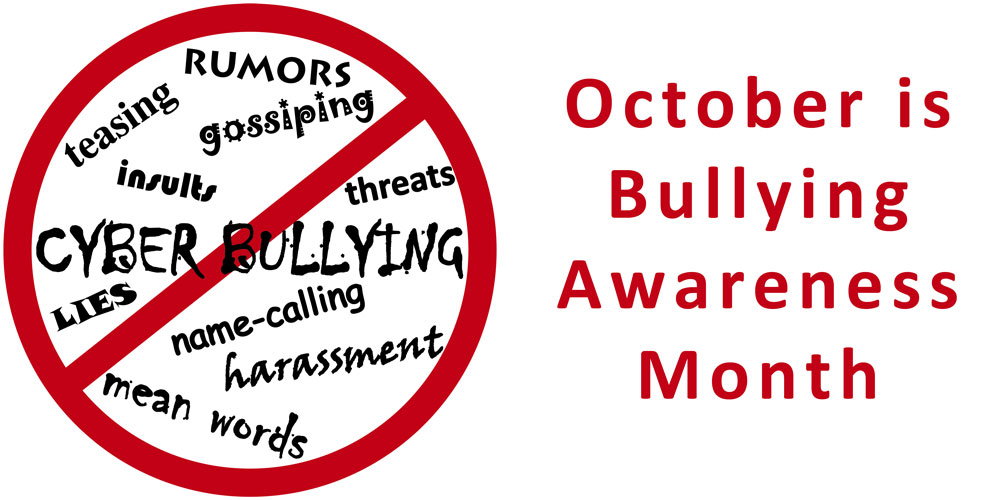National Bullying Prevention Month
By: Frank J. Menhams
Bullying bul·ly·ing | \ ˈbu̇-lē-iŋ , ˈbə-\
Definition of bullying
(Entry 1 of 2)
: abuse and mistreatment of someone vulnerable by someone stronger, more powerful, etc. : the actions and behavior of a bully; Her own childhood had been made miserable by bullying …— Michael Holroyd… underestimates the plain meanness behind the pleasure people take in bullying.— George F. Will
Most of us have had an experience with bullying, usually in school, but possibly also in our workplaces or in our communities. Bullying is a form of violence; it can be physical, verbal, psychological, or sexual. In this article I will focus on bullying between kids in the school setting.
There is much to write about the profound and negative effects of bullying on a child; the loss of self-esteem, social isolation, feelings of shame, changes in eating habits, school avoidance, symptoms of anxiety, bed-wetting, psychosomatic symptoms (stomachaches, headaches, muscle aches, and other physical complaints with no known medical cause), poor school performance, and symptoms of depression.
Long-term risks of bullying for the victim are chronic depression, increased risk of suicidal thoughts, suicide plans and suicide attempts, anxiety disorders, post-traumatic stress disorder, poor general health, self-destructive behavior including self-harm, substance abuse, and difficulty establishing trusting reciprocal friendships and relationships.
On top of these face-to-face issues, cyberbullying impacts 15% of school-aged children in the United States, according to the National Center for Education Statistics and Bureau of Justice. While that number is only 15% for nuero-typical school aged children (individuals of typical developmental, intellectual, and cognitive abilities), kids with special needs are at an increased risk for being exploited on social media.
In the course of my approximately 27 years working with “at-risk” teens and individuals with developmental disabilities, I have witnessed a lot of incidents of bullying and their detrimental effects on the victim.
As an advocate for children and their parents during IEP (Individual Education Plan) meetings, I know that it is the school’s responsibility to protect and serve our children. Parents usually do not know the extent of their rights to protect their children from bullying. It is important that parents know what their, and their children's rights are, and that the school is doing everything it is legally mandated to do to address and stop any bullying behaviors.
California State Law has anti-bullying laws which must be followed by school districts. If your child is being bullied at school, the school is legally responsible to intercede, and to make every effort to stop the bullying. This includes cyberbullying that occurs off-campus. This is an important point in that the amount of time that our children are spending on the internet, and on their phones, is making them far more vulnerable to cyberbullying.
If you are a parent that has a child that is being bullied, you have options. California schools must take bullying seriously and create an action plan to address bullying in their school.
The State of California requires school districts to create:
- Action plans for cyberbullying that occur off-campus.
- Policies prohibiting harassment, intimidation or bullying.
- Regulations for protection of specific groups of people who may be more prone to bullying; i.e., transgender students.
- Trainings of school staff how to respond to bullying acts by students.
- Provisions of mental health services to students who are subjected to bullying while at school.
- A communication protocol to inform parents when their child has been the victim of bullying at the school.
- That if any cyberbullying takes place, state-wide resources are made available to the parents.
The importance of parent’s involvement with their child’s experience in school is impossible to over-emphasize. Knowing your rights, attending meetings and being prepared is vital. Mendocino County SELPA and its Community Advisory Committee (CAC) can help you address your concerns about bullying. Please, call your local SELPA agency to get answers to your questions regarding your child, and the services they are entitled to.
###
Frank Menhams has a M.S. in Counseling Psychology and an M.A. in Educational Counseling. He has extensive experience working with adolescents and young adults. As a counseling supervisor at a therapeutic boarding school, Frank has counseled hundreds of students and their parents who were in dire need of direction. Frank worked with the Redwood Coast Regional Center for 11 years before setting off on this new path. Frank and his partner recently started a non-profit company, Dandelion Therapeutic Services, and a for-profit business, OARS (Outreach, Advocacy, Resources and Support), focusing on Speech Language Pathology and teaching social pragmatics and socialization skills.

